-

CH2 council building in Melbourne
By Sophie Lovell
Photography by Nils Koenning
-

Mick Pearce is a Zimbabwean architect who specialises in designing buildings that utilise renewable energy systems for environmental control, based on biomimetic models drawn from nature. And, as with nature, many of the interesting things that go on in his buildings happen once night falls…
In 2006 Pearce was the principal design architect for an office building for Melbourne City Council in Australia called Council House 2 (or CH2). It utilises an innovative combination of passive measures to maintain a natural ventilation and comfortable indoor climate of 21-23 degrees Celsius in a city where summer temperatures can soar to 45 degrees. A key aspect of this climate system is what takes place in the building at night. “If you want to design a building which works passively by responding completely to its immediate environment then the night is as important as the day”, explains Pearce, adding: “CH2 uses the night to disperse day heat like the planet does through back radiation into space”.
The office’s exposed concrete ceiling panels are chilled during the day providing radiant cooling for the building’s occupants and storing excess heat in the ceiling spaces above.
Previous page: view of the wind turbines that sit atop the roof of the CH2 building.
-
Then, some 60 percent of this heat is removed at night during the “night purge”, when the windows automatically open to a maximum of 65 degrees and the cooler night air is drawn in, across the undulating ceiling panels, to be then sucked out through shafts at the side of the building, drawn up by the assistance of wind turbines on the roof. This natural ventilation system, usually occurring between 2am and 6am, is based on the way termite mounds regulate their core temperature, using this same chimney or “stack” effect.
It is simple in principle but its efficiency is dependent on the CH2’s computerised building automated system BAS, which uses temperature, wind and rain sensors on a floor-by-floor basis to optimise its functions: if the building is cool enough, the windows stay closed.
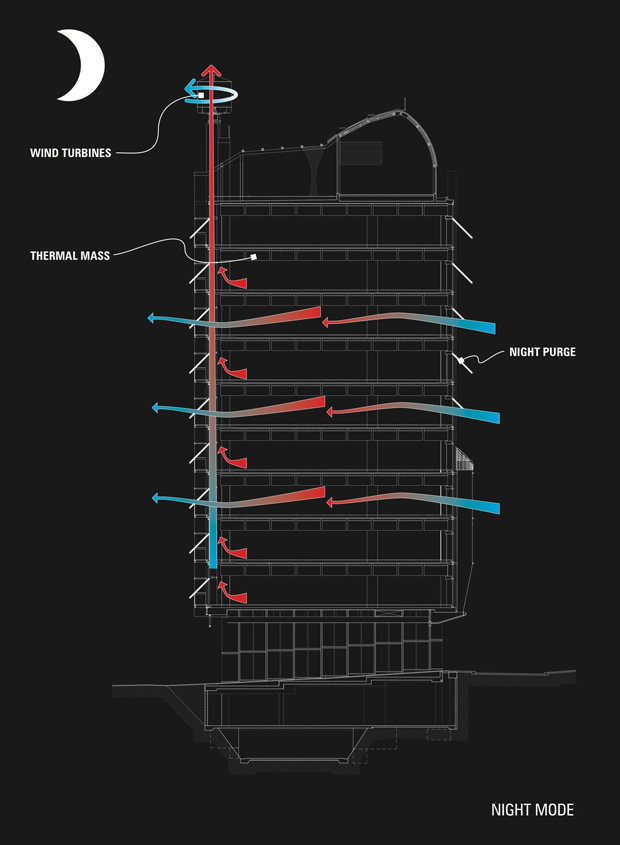
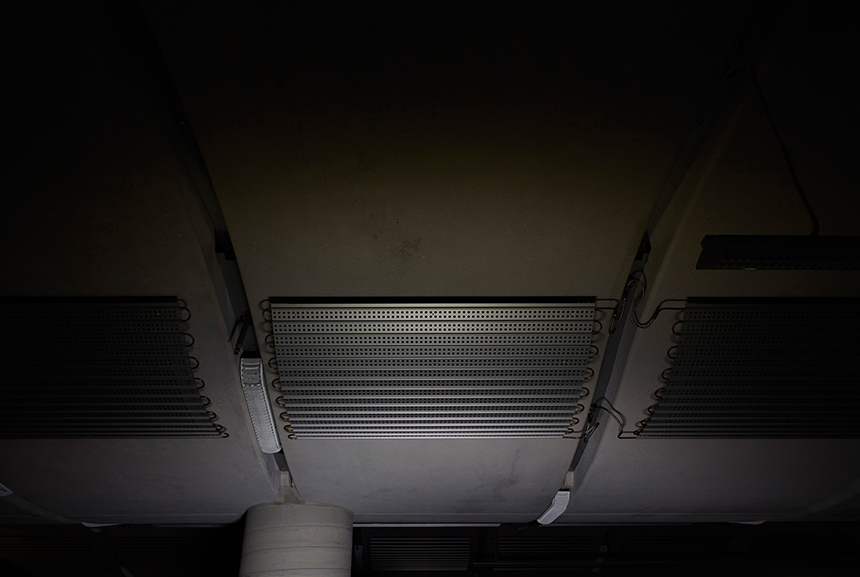
Diagram illustrating the principle behind CH2’s ventilation stack system and a detail of one of the building’s undulating ceilings. (Illustration courtesy Mick Pearce)
-
»CH2 uses the night to disperse day heat like the planet does through back radiation into space«
The heat of the daytime air is removed and purged, via windows which open to an angle of 65°, through shafts on the side of the building.
-
Supplementary cooling measures in the building, particularly useful for the retail spaces on the lower floors, include a set of “shower towers” at the side of the building through which air and water fall and cool together.
The water is then pumped through a phase changing material (PCM) plant in the basement which also acts as an additional passive cooling unit – like a rechargeable battery – to help keep the ceilings refrigerated, maintaining a steady supply of “coolth” (as against warmth) during the day.
CH2 is Melbourne’s flagship building for sustainability. Yet a report by Exergy Australia in 2012 found its performance not quite matching its promise. The architects hoped to generate energy savings of around 88 percent, yet the actual value is closer to 50 percent. Pearce believes this is due to a number of reasons: “The contractors handed over the building after their one year guarantee ran out and the occupiers did not educate anyone to run such a complex building. You need an engineer to run a fully computerised control system being fed with data from 2,500 probes in the building’s structure and equipment.
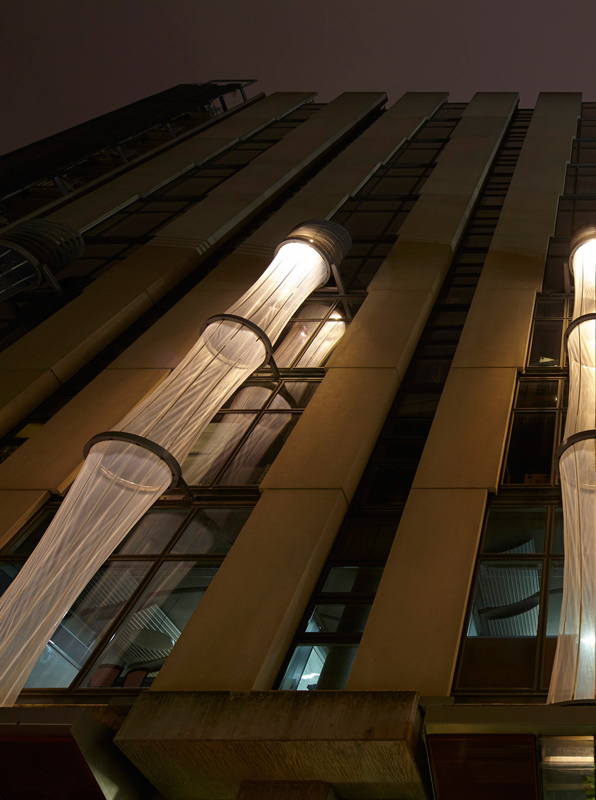
-
There was soon a data overload and no one to deal with it. Hopefully Melbourne Council will do something about this”. He adds that while users were assumed to tolerate a temperature range from 20-25 degrees Celsius, in practice they refused to budge from 22-23 degrees, whilst admitting too that the co gen plant seems less efficient than predicted.
This does not however mean that CH2 is unsuccessful. 50 percent is still a considerably large reduction.
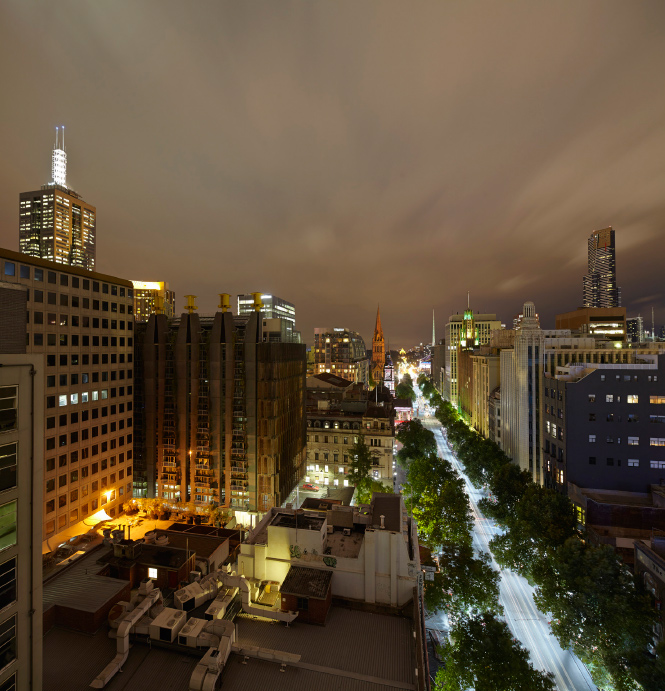
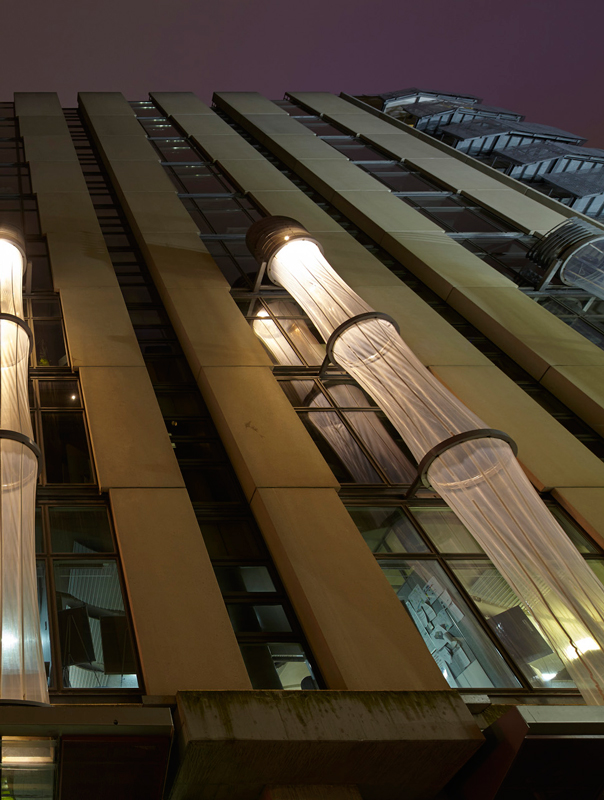
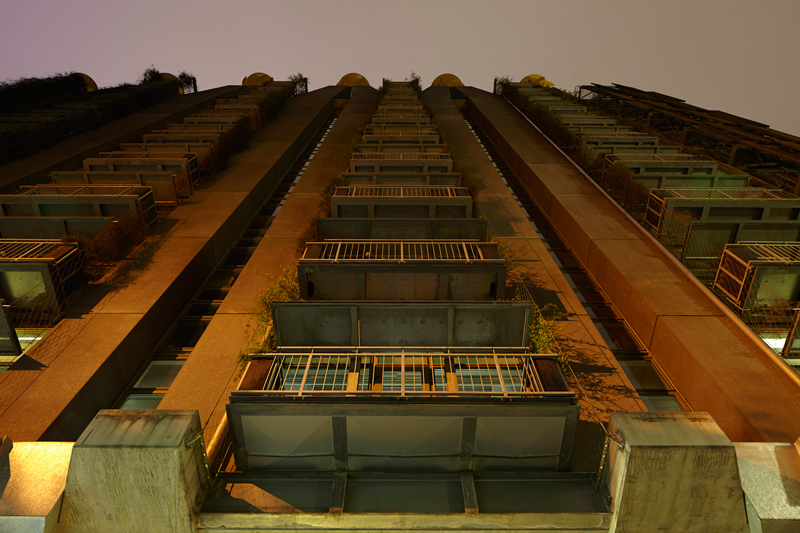
“Shower towers” provide supplementary cooling to the building, which lies in Melbourne’s city centre.
-
Mick Pearce (*1938) was born in Southern Rhodesia, present day Zimbabwe, and trained at the Architectural Association in London, and has since worked in the UK, Zambia, Zimbabwe, Australia, China, and South Africa.
Over the last 20 years Pearce has focused on sustainable architecture that explores the principles of biomimicry, imitating natural processes and materials, aiming to minimise damage to the environment.
One of his best-known buildings is the Eastgate Shopping Centre in Harare, in which the system of temperature control in the building was also inspired by the construction of termite mounds, leading to significant energy savings.
Pearce left Zimbabwe in 2000 as a result of the conflict there and worked in Australia, where among other buildings he designed the CH2 in Melbourne. He went on to work for three years in China, before returning to Zimbabwe in 2012.
In 2003, Pearce was honoured for his innovations in the field of ecological and sustainable design with a Prince Claus Award from the Netherlands.
mickpearce.com
As Pierce concludes: “My designs can easily save 50 percent energy consumption without any social engineering, but to get there you have to aim at 80 percent saving at the design stage and you have to give people what Lance Hosey calls ‘the shape of green’: the aesthetics – here the wavy ceiling, shower towers and the yellow roof turbines. The occupants of CH2 love the building so it probably will last a long time past its energy life cycle.”
Night cooling is without doubt a vital component of passive climate controls for building and CH2 is an impressive model in this respect. But all systems – especially natural ones – need ongoing care and nurture in order to succeed. It is this aspect of our biomimetic building future – dynamic monitoring and capacity for adaptation (admittedly not particularly sexy fodder for the marketing aspect of architecture) – which will likely prove to be one of the most significant areas of architectural development in the future: day or night. p

-
Search
-
FIND PRODUCTS
PRODUCT GROUP
- Building Materials
- Building Panels
- Building technology
- Façade
- Fittings
- Heating, Cooling, Ventilation
- Interior
- Roof
- Sanitary facilities
MANUFACTURER
- 3A Composites
- Alape
- Armstrong
- Caparol
- Eternit
- FSB
- Gira
- Hagemeister
- JUNG
- Kaldewei
- Lamberts
- Leicht
- Solarlux
- Steininger Designers
- Stiebel Eltron
- Velux
- Warema
- Wilkhahn
-
Follow Us
Tumblr
New and existing Tumblr users can connect with uncube and share our visual diary.
»Architecture starts when you carefully put two bricks together. There it begins.«
Ludwig Mies van der Rohe
Keyboard Shortcuts
- Supermenu
- Skip Articles
- Turn Pages
- Contents


